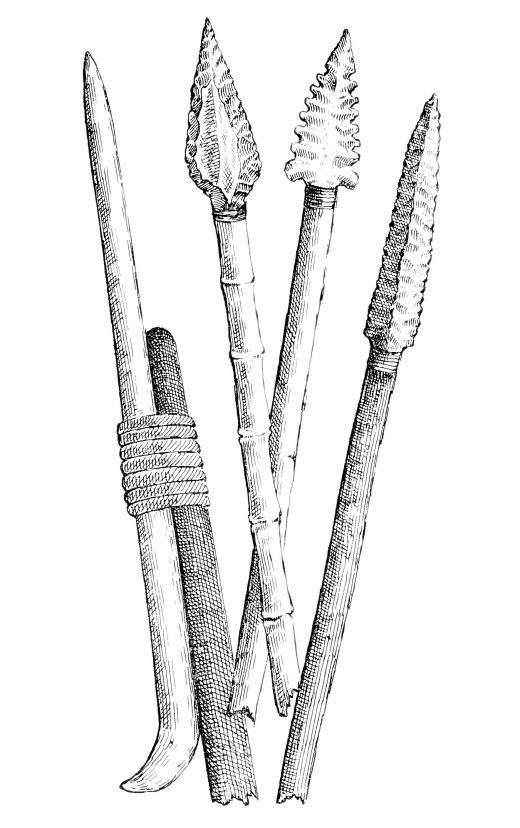What is the Mesolithic Era?
 Michael Anissimov
Michael Anissimov
The Mesolithic era refers to a short period of time immediately after the recession of continental glaciers of the last Ice Age, about 11,000 years ago (9000 BCE), to the development of agriculture 10,000 - 8,000 years ago. Mesolithic cultures are those cultures during the Mesolithic era. Sometimes the word "Epipaleolithic" is used in connection with Mesolithic, to describe groups living during the period that maintained a hunter-gatherer lifestyle, while "mesolithic" is reserved specifically for those cultures in a state of transition towards agriculture. Occasionally, but more rarely, the terms have the reverse meaning. The terminology is likely to standardize in the near future.
"Mesolithic" means "Middle Stone Age." However, the prefix "meso-" in the word can mean "between," and this has been taken some scientists to refer to cultures in between a hunter-gathering mode and an agricultural mode. The Mesolithic era begins at the end of the Pleistocene epoch and the start of the Holocene, the most recent geologic epoch.

Prior to the Mesolithic era, mile-thick continental glaciers covered most of Eurasia and North America. Any terrain north of 50 °N was essentially uninhabitable, until the ice melted around 11,000 years ago. Global temperatures increased, making life easier for humans worldwide. By the Mesolithic, humans had already spread across the entire world, except for Antarctica and a few remote islands. The Americas and Australia were fully colonized.
The Mesolithic era was an unusual transition time between the Paleolithic and the Neolithic. Because the period was relatively short, Mesolithic artifacts are relatively hard to come by, consisting mainly of middens, or scrap-heaps. In coastal areas around the world, there are large shell middens dating to the Mesolithic era. In British Columbia, there is a midden several meters in depth which has been around for at least 10,000 years.
Mesolithic cultures were about as advanced as you could get before establishing agriculture and cities. They hunted animals with a variety of bows and spears, and drove most of the world's megafauna (large animals such as mammoths) to extinction. Like civilizations before them, they survived through a mix of hunting and gathering, although may have begun to intentionally plant the seeds of edible plants in fertile soils, pulling out the weeds and performing artificial selection.
AS FEATURED ON:
AS FEATURED ON:











Discussion Comments
I would like to know about the dangers in this time period. This is a great article but it didn't help me.
@anon118331: It's different because of the houses. The paleolithic era house weren't man made, but those in the other two eras were. They had the food they planted and hunted a little. They migrated and they had new technologies. This is all from my sixth grade text book and from prior knowledge.
i would like to know more about what they did, about what made this time period different from the paleolithic and neolithic eras.
Post your comments